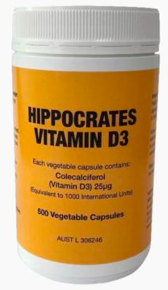
VITAMIN D ADDRESSES CORONAVIRUS AND OTHER RESPIRATORY ILLNESSES
Solar radiation and supplemental vitamin D have been shown to reduce pandemic fatality rates, which makes sense considering how important vitamin D is for controlling infections and lowering your risk for influenza and the common cold.
Research shows high-dose vitamin D supplementation lowers the risk of respiratory illnesses and lung infections in the elderly by 40%. Vitamin D can improve the immune system’s ability to fight infections because it bolsters the first line of defence of the immune system.
Fatality rates during the 1918-1919 influenza pandemic were influenced by season, with greater numbers of people dying during the winter than the summer.
Deaths during the 1918-1919 influenza pandemic have been linked to both the influenza virus and secondary bacterial lung infections. Case fatality rates and percentage of influenza cases complicated by pneumonia were available from survey data for twelve United States locations in the 1918-1919 pandemic.
This study analyses case fatality rates and cases complicated by pneumonia with respect to estimated summertime and wintertime solar ultraviolet-B (UVB) doses as indicators of population mean vitamin D status.
Substantial correlations were found for associations of July UVB dose with case fatality rates and rates of pneumonia as a complication of influenza. Similar results were found for wintertime UVB. Vitamin D upregulates production of human cathelicidin, which has both antimicrobial and antiendotoxin activities.
Vitamin D also reduces the production of proinflammatory cytokines, which could also explain some of the benefit of vitamin D since H1N1 infection gives rise to a cytokine storm.
As a general guideline, get your vitamin D level tested twice a year, in the winter and summer, to make sure you’re in a healthy range of 60 ng/mL to 80 ng/mL year-round. (A compelling body of research suggests 40 ng/mL is the cutoff for sufficiency.)

